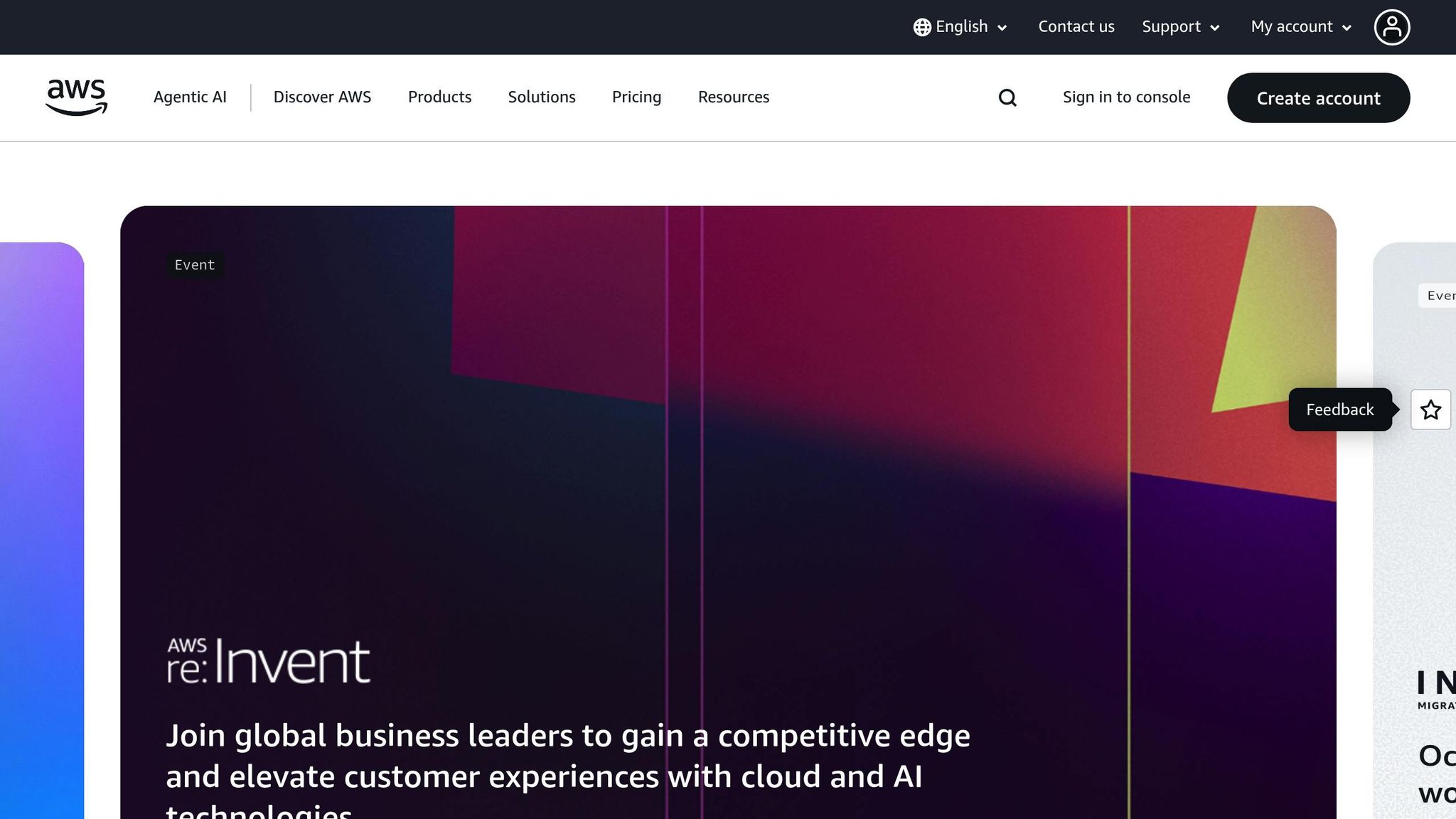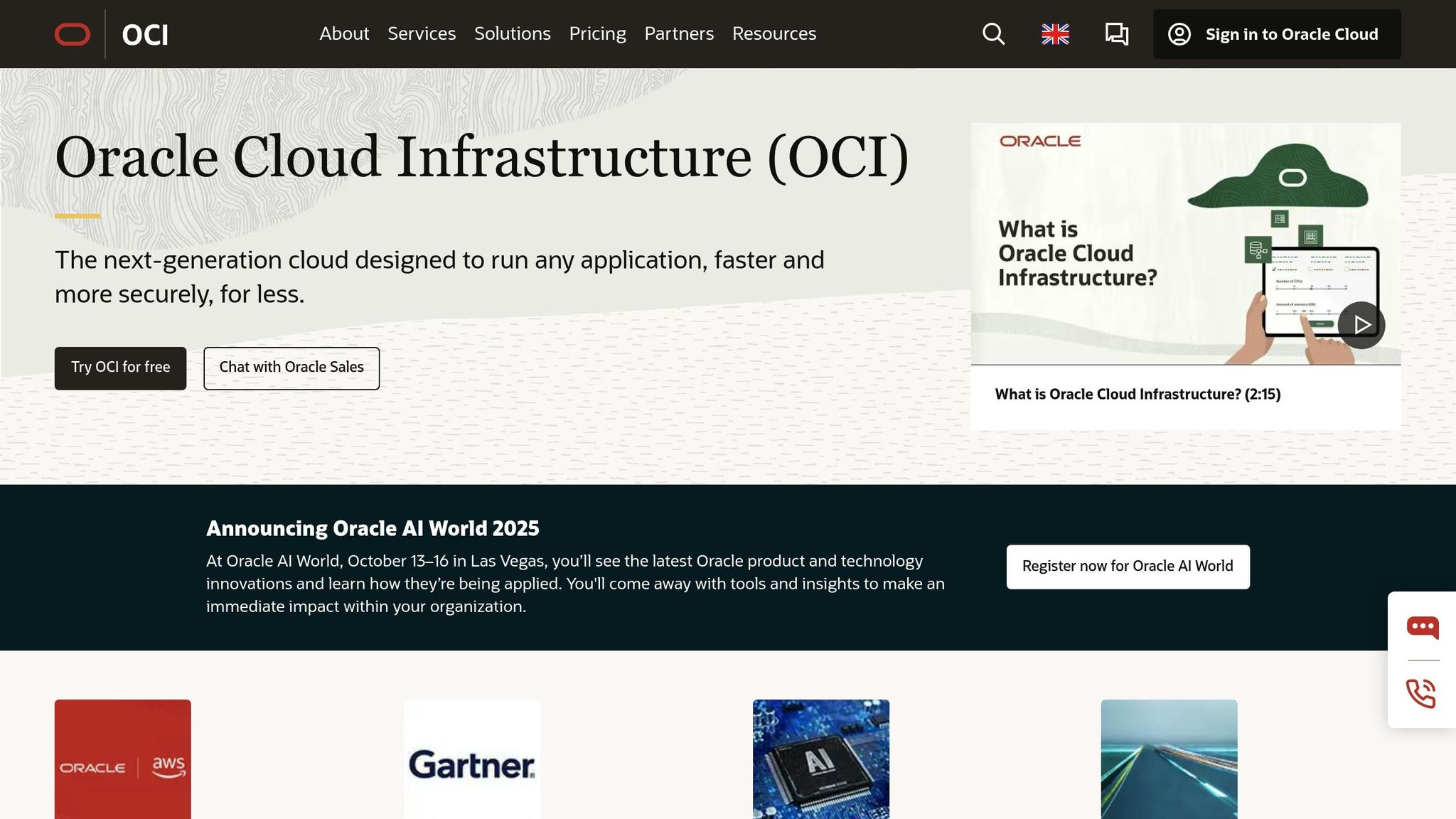Cross-region scaling in cloud computing improves performance and availability by distributing workloads across multiple regions. However, it introduces several cost challenges, especially for UK businesses. These include:
- Data Transfer Fees: Transferring data between regions can significantly increase expenses.
- Regional Pricing Differences: Compute, storage, and other services are priced differently across regions.
- Compliance Costs: Adhering to GDPR and data residency rules can limit scaling options and increase costs.
- Currency Fluctuations: Services priced in USD expose UK businesses to exchange rate risks.
Key Providers Overview:
- AWS: Extensive global reach but high data transfer fees and complex pricing.
- Azure: Strong UK presence and Microsoft integration, though some services are more expensive.
- GCP: Transparent pricing and discounts but fewer UK-based resources.
- OCI: Predictable pricing and cost-effective replication, but limited global coverage.
To manage costs:
- Use tools like CDNs for efficient data delivery.
- Opt for reserved or spot instances when possible.
- Regularly audit deployments to identify inefficiencies.
Choosing the right provider depends on your business needs, current tech stack, and compliance requirements. AWS suits businesses needing global coverage, Azure integrates well with Microsoft tools, GCP offers clarity in pricing, and OCI is ideal for cost-conscious organisations.
AWS re:Invent 2023 - How Netflix uses AWS for multi-Region cache replication (NFX304)

1. Amazon Web Services (AWS)
When it comes to cross-region scaling, AWS pricing demands careful scrutiny, especially for businesses in the UK. The costs can stack up quickly, and understanding how AWS structures its pricing is key to managing budgets effectively. AWS breaks down these costs into categories like compute, data transfers, storage, and management overhead.
Compute Resource Pricing
Compute costs can vary widely depending on the region. For example, EC2 instance pricing often differs significantly from one region to another. While tools like Auto Scaling Groups and Elastic Load Balancers offer flexibility and control, they also add complexity and come with their own regional pricing differences. On top of that, any data transferred between regions will further increase overall costs.
Data Transfer Charges
Moving data between AWS regions can rack up notable fees, and these charges are anything but uniform. To reduce costs, some businesses turn to Content Delivery Networks (CDNs) like CloudFront. While this approach can help, it’s worth noting that CloudFront has its own pricing structure to consider. If you’re using RDS cross-region replication, you’ll need to account for both the cost of the additional database instances and the data transfer fees involved.
Storage Replication Costs
Cross-region storage replication is another area where costs can add up. Services like S3, EBS snapshots, and EFS all incur charges for both the storage itself and the data transfer between regions. These fees can quickly escalate if replication is frequent or involves large volumes of data.
Management Overhead
Managing resources across multiple regions introduces added complexity - and costs. For instance, creating custom CloudWatch dashboards or centralising logs across regions can increase the number of API calls, which in turn raises operational expenses. Similarly, tools like AWS Systems Manager can streamline operations but also contribute to higher overall costs due to increased API usage.
2. Microsoft Azure

Microsoft Azure presents a unique pricing structure for cross-region scaling, which poses specific challenges for organisations in the UK. Costs are shaped by several factors, including compute resources, data transfer fees, storage replication, and operational management.
Compute Resource Pricing
Azure's Virtual Machine Scale Sets enable automated scaling across regions, but the cost of instances varies depending on the region. Similarly, the Azure Load Balancer charges based on the volume of inbound and outbound data it manages, which can significantly affect budgets during traffic surges. If you're using Azure App Service to scale web applications, be aware that pricing for service tiers differs across regions, meaning the same tier could cost more (or less) depending on where it's deployed. These regional pricing differences also influence data transfer expenses.
Data Transfer Charges
When deploying Azure services across regions, data transfer costs can quickly add up. These charges depend on the specific regions involved and can include bandwidth fees and DNS query costs from services like Azure Traffic Manager. For those handling heavy traffic, integrating Azure CDN can help control bandwidth expenses - though careful configuration is essential to avoid unexpected charges.
Storage Replication Costs
Azure's geo-redundant storage options, such as GRS and RA-GRS, replicate data across regions, but they come with higher costs compared to locally redundant storage. Similarly, active geo-replication for Azure SQL Database introduces additional expenses for compute, storage, and synchronisation. These premium features can strain budgets, especially in large-scale, cross-region deployments.
Management Overhead
Managing Azure resources across multiple regions can lead to increased operational costs. Tools like Azure Monitor and Log Analytics, while essential for tracking performance, can drive up expenses if not configured to handle high logging volumes efficiently. Automation tools like Azure Automation also incur charges for every execution. Additionally, managing services like Azure Key Vault across regions introduces extra costs, as handling keys and certificates in multiple locations adds complexity and operational overhead.
Understanding these regional pricing differences and associated costs is crucial for UK businesses aiming to optimise their Azure deployments. Careful planning and evaluation can help balance performance goals with budget limitations.
3. Google Cloud Platform (GCP)

GCP offers a scalable and predictable pricing model, making it an appealing choice for UK businesses with global operations. Unlike AWS and Azure, GCP provides cost predictability through features like sustained use discounts and committed use contracts. However, businesses need to carefully plan for additional costs, such as data transfer and storage replication, to keep their budgets balanced.
Compute Resource Pricing
GCP's Compute Engine provides sustained use discounts for workloads that run continuously. For cost-saving opportunities, preemptible instances are ideal for fault-tolerant tasks, while managed instance groups and the Global Load Balancer dynamically adjust capacity based on demand. Cloud Run charges on a per-use basis, but cold-start delays between distant regions may necessitate always-on instances, which can increase costs. Additionally, GCP’s data transfer mechanisms play a key role in managing cross-region expenses.
Data Transfer Charges
Data egress fees depend on the destination, with intercontinental transfers costing more than transfers within Europe. To reduce bandwidth costs, Cloud CDN caches content closer to users, while Cloud Interconnect can be a cost-efficient option for high-volume applications, though it often comes with minimum usage commitments. For latency-sensitive applications, the Premium Network Tier routes traffic through Google’s private network at a higher cost, compared to the more economical Standard Tier.
Storage Replication Costs
GCP offers various storage replication options, each with distinct pricing. Multi-regional storage, which replicates data across multiple regions within a continent, is priced higher than regional storage. Dual-region storage provides a balance, offering redundancy between two specific regions at a moderate cost. Additional charges apply for Cloud SQL cross-region read replicas, which synchronise data across locations, and for persistent disk snapshots stored in multiple regions, which are useful for disaster recovery.
Management Overhead
Running cross-region solutions on GCP can lead to increased management costs. Services like Cloud Monitoring and Cloud Logging charge based on the volume of data ingested, which can add up when tracking detailed metrics across multiple regions. Cloud Functions, used for automation, are billed per invocation, and their serverless nature introduces unique usage patterns. While Identity and Access Management (IAM) and Cloud Key Management Service do not have direct usage fees, managing permissions and ensuring secure access across regions can increase operational complexity. Tools like Cloud Deployment Manager simplify deployments, and the Google Cloud Console offers centralised management at no additional cost. However, the need for extensive monitoring and orchestration can drive up overall operational expenses.
Need help optimizing your cloud costs?
Get expert advice on how to reduce your cloud expenses without sacrificing performance.
4. Oracle Cloud Infrastructure (OCI)

Oracle Cloud Infrastructure (OCI) simplifies data redundancy and disaster recovery with its automated replication system. By enabling replication policies, OCI Object Storage ensures that objects are copied across regions, safeguarding against outages and supporting recovery efforts [1]. Once a policy is active, any object uploaded to the source bucket is asynchronously duplicated to a read-only destination bucket. Additionally, if an object is deleted from the source bucket, the deletion is automatically reflected in the destination bucket [1].
Advantages and Disadvantages
Based on the detailed cost breakdowns earlier, it's clear that each cloud provider has its own strengths and challenges when it comes to cross-region scaling. For UK businesses, understanding these trade-offs is key to selecting the right cloud infrastructure.
AWS stands out with its expansive global reach, offering numerous regions and availability zones. This makes it highly flexible for cross-region deployments. However, this broad network comes with higher data transfer fees and the potential for unpredictable costs, especially during frequent auto-scaling events.
Microsoft Azure is a strong choice for organisations already using Microsoft services like Office 365 or Active Directory. Its seamless integration reduces operational complexity, and its UK-based regions ensure low latency for domestic operations while supporting GDPR compliance. On the downside, Azure's compute costs can be higher for certain instance types.
Google Cloud Platform (GCP) is praised for its strong network performance and straightforward pricing. Its global network ensures reliable inter-region connectivity, and long-running workloads benefit from automatic discounts. That said, GCP's smaller footprint in the UK means fewer third-party integrations and less local expertise.
Oracle Cloud Infrastructure (OCI) offers enterprise-grade features at competitive prices. Its automated replication and disaster recovery tools help streamline operations, and its predictable pricing model reduces the risk of unexpected expenses. However, OCI's limited global presence can be a hurdle for businesses needing extensive regional coverage.
To help compare these providers, here’s a quick summary:
| Provider | Cost-Effectiveness | Complexity | UK Enterprise Suitability |
|---|---|---|---|
| AWS | Flexible offerings but potentially high costs | Complex pricing structure | Ideal for businesses needing wide geographic coverage |
| Azure | Cost-effective for Microsoft users | Integrated tools simplify management | Strong domestic presence with compliance focus |
| GCP | Transparent pricing with discounts for long-term use | Simpler than AWS but fewer integrations | High performance, though limited local support |
| OCI | Predictable and competitive pricing | Simplified management features | Good for cost-focused businesses, despite limited global reach |
Ultimately, the right choice hinges on your specific business needs, current technology stack, and future growth plans. Azure is a natural fit for businesses entrenched in the Microsoft ecosystem, while GCP appeals to those valuing clear pricing. AWS remains a top pick for its vast service variety, and OCI is a smart option for enterprises prioritising cost control and reliability.
Conclusion
Scaling across regions brings powerful opportunities for UK businesses, but it also comes with a mix of cost considerations and technical challenges. Choosing the right provider is key to managing these factors effectively.
For instance, data transfer fees can spike during busy periods, and compute costs vary depending on the provider. Some offer discounts for reserved instances, while others reward sustained usage. Additionally, UK businesses must navigate strict regulatory requirements, such as data residency rules, which may restrict scaling options but can help minimise latency and legal risks.
To keep costs under control, consider strategies like intelligent auto-scaling, using spot instances, employing content delivery networks (CDNs), and running regular audits to identify and eliminate inefficiencies in data transfer and resource usage. These steps can also inform your choice of provider.
When selecting a cloud provider, think about how well they align with your technology stack, future growth plans, and risk tolerance. For example:
- Azure is ideal for businesses heavily invested in Microsoft technologies.
- AWS stands out for its global infrastructure and reach.
- Google Cloud Platform (GCP) is known for its pricing transparency.
- Oracle Cloud Infrastructure (OCI) offers predictable cost structures.
Given the complexity of cross-region scaling, expert guidance can make all the difference. Hokstad Consulting, for example, specialises in cloud cost engineering, helping businesses optimise expenses and achieve seamless multi-region deployments without downtime.
Ultimately, success in cross-region scaling comes down to balancing performance, compliance, and cost. Regular monitoring, thoughtful planning, and professional advice can help you achieve this balance while keeping your operations running smoothly.
FAQs
How can businesses in the UK manage currency fluctuations when scaling cloud operations across regions?
UK businesses can take steps to reduce the impact of currency fluctuations by using tools like forward contracts. These allow companies to lock in an exchange rate, protecting them from unexpected cost spikes. Another option is currency swaps, which can help manage cash flows and debts across different currencies, offering a buffer against market volatility.
A smart way to tackle this challenge is by diversifying cloud operations across regions with currencies that tend to be more stable. By doing this, businesses can maintain more predictable costs when expanding into multiple regions, creating a more secure financial foundation for their long-term cloud strategies.
How can businesses reduce data transfer costs between cloud regions?
To keep data transfer costs between cloud regions in check, it’s crucial to minimise unnecessary data movement. By ensuring that applications and their associated data remain within the same region, you can significantly cut down on egress charges. Using Content Delivery Networks (CDNs) is another effective approach, as they cache static content closer to your users, reducing the need for inter-region transfers.
For even more cost-effective transfers, explore private connectivity options like VPC endpoints or direct connections (such as AWS Direct Connect). These methods not only help avoid public internet charges but also enhance the performance and reliability of your data transfers.
How do GDPR and data residency rules impact cross-region scaling for UK businesses?
For UK businesses looking to expand across regions, GDPR and data residency requirements are critical considerations. Data residency laws often require sensitive information to be stored within the UK or specific jurisdictions. This can lead to increased expenses, as businesses may need to invest in local infrastructure or opt for specialised cloud services tailored to these rules.
On top of that, GDPR imposes stringent rules on transferring data across borders. Companies must ensure compliance through measures like solid data processing agreements and advanced security protocols. The stakes are high - violations can result in penalties of up to 4% of annual turnover, making compliance not just a legal obligation but a financial necessity.
As a result, many UK businesses prioritise cloud providers and strategies that meet local compliance requirements. This approach helps them keep costs under control while reducing exposure to legal risks.
